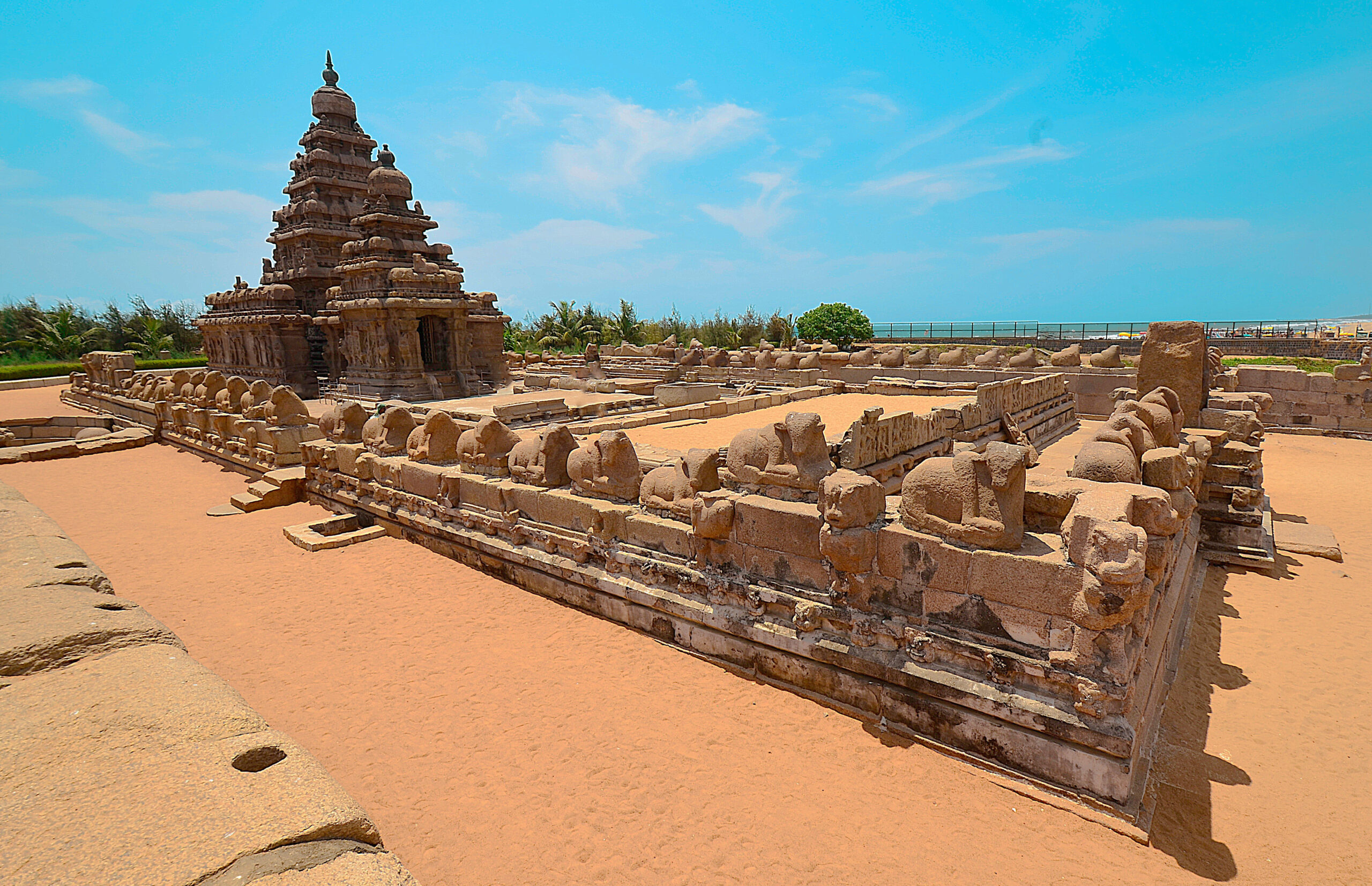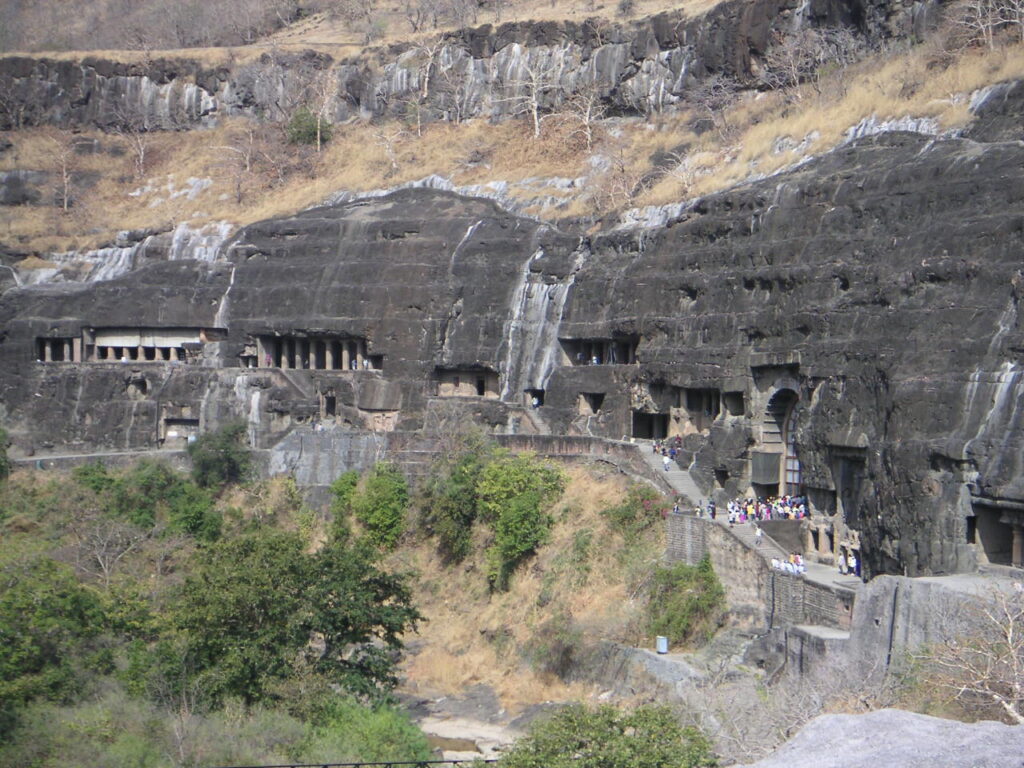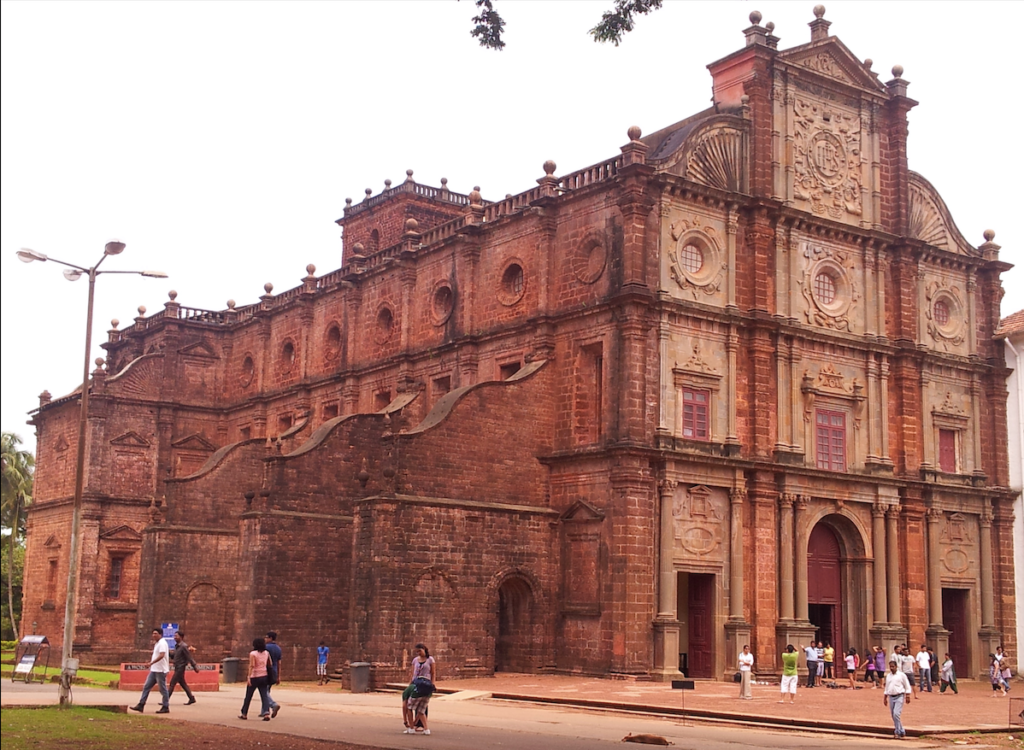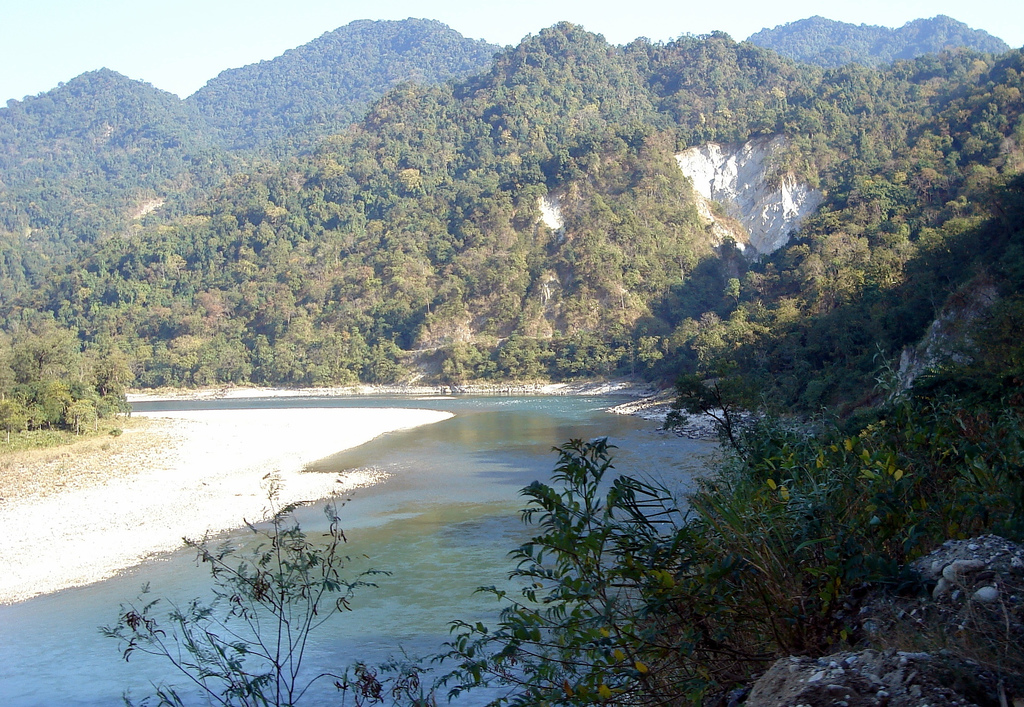Introduction
The Group of Monuments at Mahabalipuram, also known as Mamallapuram, is a collection of 7th and 8th-century CE rock-cut and monolithic monuments located in Tamil Nadu, India. These monuments are a remarkable example of ancient Indian architecture and sculpture, reflecting the artistic excellence of the Pallava dynasty. Recognized as a UNESCO World Heritage Site since 1984, Mahabalipuram’s monuments continue to captivate visitors with their intricate carvings and historical significance.
Historical Context
Mahabalipuram, situated along the Coromandel Coast of the Bay of Bengal, was a thriving port city during the Pallava dynasty’s reign, particularly under the rule of King Narasimhavarman I, also known as Mamalla, after whom the city was named. The Pallavas were great patrons of art and architecture, and Mahabalipuram served as a prominent center for their architectural innovations.
Architectural and Artistic Significance
The Group of Monuments at Mahabalipuram comprises various structures, including rock-cut caves, monolithic temples, bas-reliefs, and structural temples. Each of these monuments exhibits the Pallavas’ mastery over rock-cut architecture and their ability to blend religious themes with artistic creativity.
The Five Rathas
The Five Rathas, also known as Pancha Rathas, are a group of five monolithic temples carved from a single granite outcrop. Each ratha is named after the Pandavas from the Mahabharata epic, though there is no historical connection to the characters.
- Draupadi Ratha: The smallest of the five, Draupadi Ratha is dedicated to Goddess Durga. It resembles a simple hut with intricate carvings of Durga and her lion mount.
- Arjuna Ratha: This ratha is dedicated to Lord Shiva and features a Dravidian-style tower (Vimana) with detailed carvings of deities and mythical figures.
- Bhima Ratha: Known for its large, barrel-shaped roof, Bhima Ratha is dedicated to Lord Vishnu. It showcases elaborate carvings and a spacious interior.
- Dharmaraja Ratha: The largest of the five, this ratha is a three-tiered structure adorned with intricate sculptures of various deities, including Lord Shiva.
- Nakula-Sahadeva Ratha: These twin rathas are dedicated to Indra, the king of gods, and feature sculptures of elephants and lions.
The Shore Temple
The Shore Temple, built around 700-728 CE, stands majestically on the shore of the Bay of Bengal. It is one of the earliest structural temples in South India, constructed using blocks of granite. The temple complex consists of two shrines dedicated to Lord Shiva and a smaller shrine dedicated to Lord Vishnu.
The Shore Temple is renowned for its exquisite carvings and its unique location, which makes it appear as if it is emerging from the sea. The temple’s pyramidal structure, intricate carvings of gods, goddesses, and mythical creatures, and its association with maritime history make it a significant monument in Indian architecture.
Arjuna’s Penance (Descent of the Ganges)
One of the most impressive bas-reliefs in Mahabalipuram, Arjuna’s Penance (also known as the Descent of the Ganges), is a massive open-air rock sculpture that measures approximately 96 feet long and 43 feet high. The relief depicts a variety of scenes from Hindu mythology, with two main interpretations: Arjuna performing severe penance to obtain Shiva’s weapon, and the descent of the sacred river Ganges to Earth.
The sculpture is a masterpiece of narrative art, featuring over 100 figures, including gods, celestial beings, animals, and humans. The intricate details and dynamic composition of the relief demonstrate the high level of skill and creativity of Pallava artists.
The Varaha Cave Temple
The Varaha Cave Temple is a rock-cut cave temple that exemplifies the Pallava’s proficiency in cave architecture. The temple is dedicated to Lord Vishnu, depicted in his Varaha (boar) incarnation rescuing the Earth (Bhudevi) from the cosmic ocean. The cave’s interior is adorned with finely carved pillars and panels depicting various mythological scenes.
Unique Features and Innovations
The monuments at Mahabalipuram showcase several architectural and artistic innovations introduced by the Pallavas:
- Monolithic Architecture: The use of single rock formations to create entire temples and sculptures is a distinctive feature of Mahabalipuram. This technique required immense precision and skill.
- Blending of Styles: The monuments reflect a fusion of different architectural styles, including Dravidian and Vesara styles, indicating the Pallavas’ openness to cultural and artistic influences.
- Narrative Reliefs: The extensive use of narrative reliefs to depict mythological stories and everyday life is a hallmark of Mahabalipuram’s art. These reliefs are notable for their intricate detail and dynamic composition.
Conservation and Challenges
The Group of Monuments at Mahabalipuram has faced several challenges over the centuries, including weathering due to its coastal location, natural disasters, and human activities. Conservation efforts have been ongoing, with the Archaeological Survey of India (ASI) playing a crucial role in preserving these monuments.
Cultural and Tourism Significance
Mahabalipuram is not only a site of historical and architectural importance but also a major cultural and tourist destination. The monuments attract thousands of visitors from around the world who come to marvel at the ancient craftsmanship and immerse themselves in the rich cultural heritage of India.
The annual Mahabalipuram Dance Festival, held in the backdrop of the Shore Temple, celebrates classical Indian dance forms and brings together artists and performers from across the country. This festival highlights the enduring cultural relevance of Mahabalipuram and its monuments.
Conclusion
The Group of Monuments at Mahabalipuram stands as a remarkable testament to the artistic and architectural achievements of the Pallava dynasty. These monuments, with their intricate carvings, monolithic structures, and rich mythological narratives, offer a glimpse into the ingenuity and creativity of ancient Indian craftsmen.
As a UNESCO World Heritage Site, Mahabalipuram is recognized for its outstanding universal value and continues to inspire awe and admiration among scholars, tourists, and art enthusiasts alike. The ongoing conservation efforts ensure that this cultural treasure is preserved for future generations, allowing them to appreciate and learn from the rich legacy of the Pallavas.
4o






